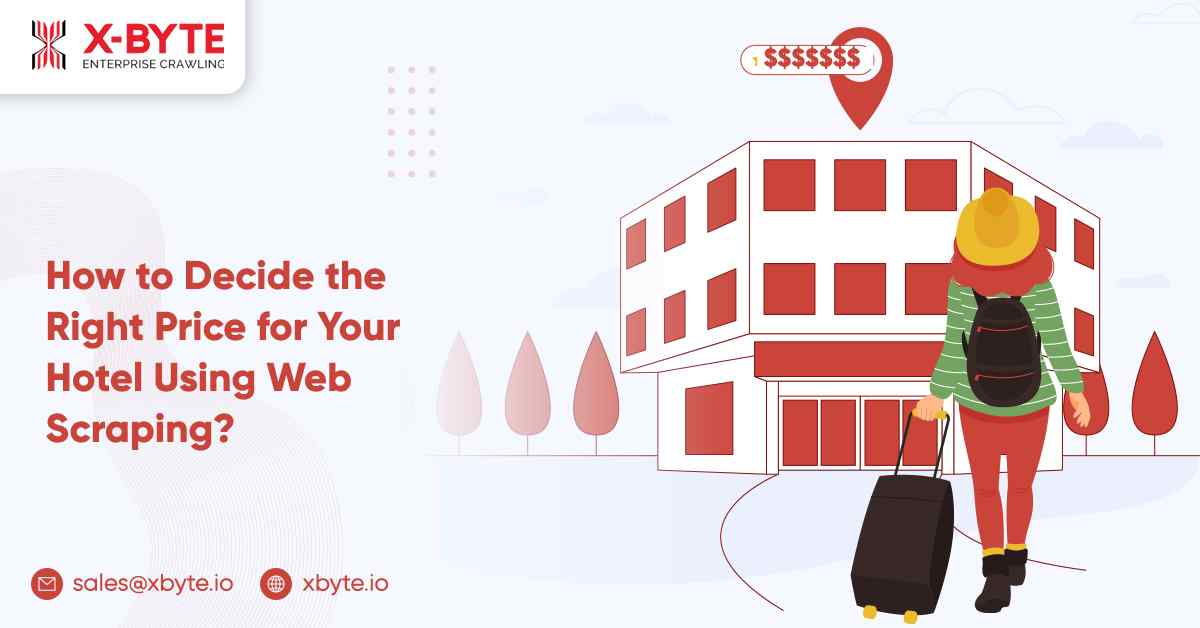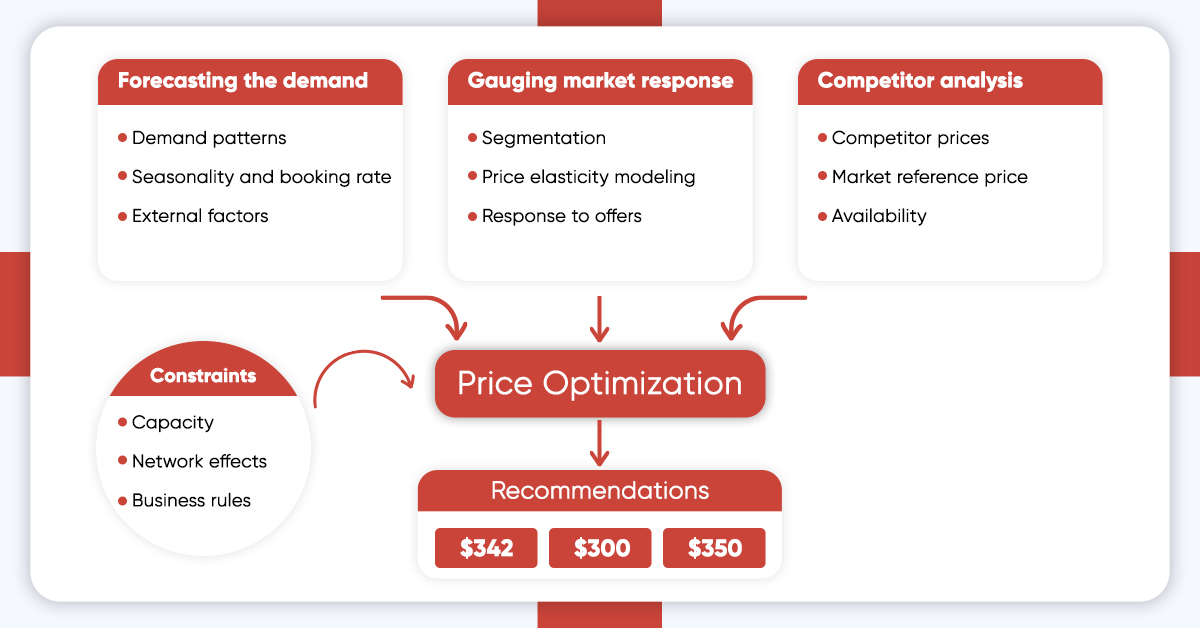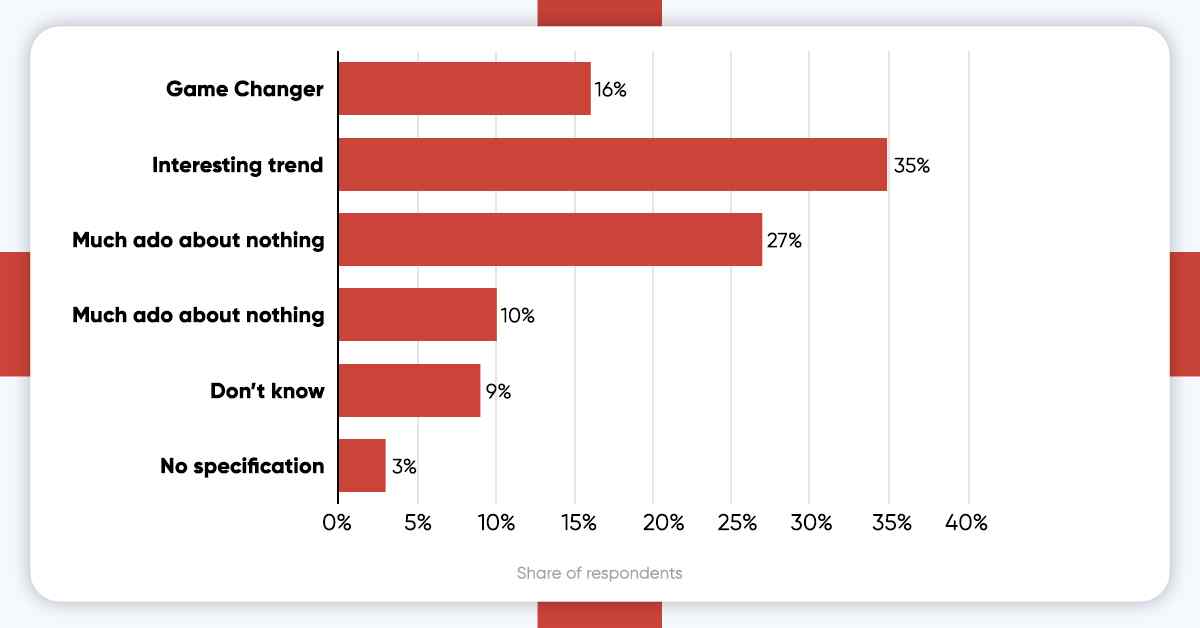
The hospitality business has been continuously expanding for decades and shows no signs of stopping down. Travelers that are tech-savvy use internet platforms to plan, book, and experience their journeys.
Nowadays, customer experience has become one of the most important factors in the hotel industry’s high sales figures. While customer support and experience will always be vital in the hotel industry, the introduction of the internet travel agencies has made the market more price-sensitive than ever before.
Price sensitivity is something that e-commerce revolution brought to us, but it appears to stay for long. In e-commerce, the emphasis on the rate is gradually shifting, and user experience is expected to become a differentiator shortly.
If your prices aren’t comparable or better than your competitors, you have a higher risk of losing the sale. In their search of the greatest deals, consumers now use price comparison portals that take data from many sources and show it all in one place for simple comparison.
To never be left alone, the hospitality sector is increasingly grasping the idea of big data and the countless ways of incorporating web data into appropriate hotel pricing may aid revenue growth and improve customer experience.
So, what will be the result? It is very simple: to stay competitive in the hotel sector, you must use web scraping to price your hotel.
Formulating Pricing Strategies
A competitive price isn’t the only factor to consider while developing a price structure. Many other factors should be considered when establishing a pricing plan for your company. Some conditions must be met before the process begins.
Recognize Your Buyers’ Personas
Buyers assist you in redefining your pricing strategy by determining your customers’ willingness to buy at a specific price point. This is critical for effectively pricing your services. Buyer profiles who are willing to pay extra as well as those who are extremely pricing sensitive should be met in your pricing approach.
Compiling the Information
In pricing, gathering useful data from the appropriate sources is critical. You can use this information to develop a real worth pricing plan that attracts different targeted categories. Cost is a difficult procedure that necessitates a large amount of data to get it right.
The most crucial data points you should be looking at are our internal information and competitive pricing data. Your price strategy will be heavily influenced by your competitor’s pricing structure. Web scraping services can be used to collect price data from competitor sites and the internet travel platforms.
Factors Your Price Strategy Will Depend On
There are majorly 3 factors that you must consider while coming up with a cost policy.
-
Demand
-
Market Response
-
Competition

Estimating the demand
Predictive analytics is a requirement for developing a long-term pricing policy that lasts for at least two years. When it comes to describing or forecasting anything, looking at historical data and understanding progressive trends is the best way to go.
It should give a good idea of the overall picture and help you to understand periodicity and how it relates to demand and reservation prices. You must also examine upcoming events as well as any external considerations. Other factors to consider are:
- Patterns of demand
- Seasonality and the rate of booking
- Factors from outside
Assessing Market’s Reaction
Market response within industries varies greatly. As a result, it’s critical to know how your market reacts to price fluctuations and promotion strategies. The outcomes will have a significant impact on your pricing approach. To come up with a pricing structure, you should also divide your clients into several divisions.
Sub factors:
- Division
- Modeling and price elasticity
- Response to offers
Competitive Price Modeling
As previously said, price competition is no longer an option, with competitiveness hitting new levels, thanks to comparison site engines and online travel companies.
This is where competitor analysis solutions like web crawling is useful. You may evaluate where you are competing and accurately know what it would take to defeat them by extracting rival prices from relevant web sources. Web crawling services like X-Byte Enterprise Crawling offer near-real-time crawls so that companies may see their competitors’ prices in real-time at any moment.
- Price comparisons
- Price in the market as a benchmark
- Availability
Why Do You Need Site Data to Figure Out How Much Does a Hotel Cost?
Today’s informed buyers conduct thorough research. Before making a purchasing decision, they compare pricing from several websites. To respond to these active consumers, price comparison websites, particularly in the hospitality industry, have developed over the years. Consumers may compare costs across companies in only a few clicks using these websites. As a result, pricing pressure between enterprises becomes more intense. Dynamic pricing is used in this situation.
Pricing strategy, which may be used in a variety of industries including e-commerce and hotels, is a highly effective yet underappreciated revenue management solution. It is a proven method of boosting a company’s finance by increasing revenue and profitability. Target costing is known as a “game-changer,” particularly in competitive industries.

It’s difficult to set a price. Many hotels struggle with finding the appropriate balance between undervaluing and overpricing. They can enhance profit by adjusting room pricing daily, hourly, or even minutely using web applications from hotel price scraping.
What Factors Have an Impact on Hotel Pricing Dynamics?
The goal of a hotel pricing plan is straightforward: to optimize the bottom line. However, administering this complex pricing scheme is quite difficult. It is dependent on several factors, including:

1. Hotel Capacity
The capacity of hotels is the main factor to consider while finalizing the rates for booking. Hotel rates depend on room availability and the client’s requirement. If a hotel expects full booking for a certain event, then they can raise the price of their rooms and can still get sufficient booking to sell the rooms. Similarly, Hotel decreases the rate close to dates of arrival if they feel occupancy isn’t met. After analyzing other factors, you must check whether the pricing strategies make sense for your capacity.
2. Room Type
Normally, you’d expect a restaurant’s suites rooms to have the same price. This is not the case as each room has a distinct rating and delivers different benefits. A room with a view of a beach would be much more expensive than one with a view of the parking lot.
3. Discount Offers
Few travelers with a budget will always look for discounts and deals that save money. Promotions are a great way to boost up with and remain ahead of the competition.
4. Competitor’s Rates
Hotels frequently aim to match their competitors’ prices to boost income. It assists businesses in strategically positioning themselves in front of their clients by considering global market constraints.
5. Booking Date/Time
In previous times, hotel rates were adjusted depending on how much in advance clients made the bookings. Sometimes, clients that wait until the last month often make off with the best offers at the lowest prices.
6. Centralized Locations
There is a huge requirement for the hotels located in a city or close to famous site seeing locations. Likewise, room prices will increase if the hotel hosts conferences or seminars.
7. Change in Season
Mostly during the off-season, hotel room rates in popular destinations will also be lower. These hotels will raise prices during the high season to increase their revenue before prices drop.
8. Demand Forecasting
Fixing the “correct price” necessitates extensive forecasting. To price the hotel room properly, management must have a strong understanding of the demand level for each day.
9. Network Effects
The network effect is the rise in demand and value provided by service as more and more people use it. The network effect is a side effect of your hotel’s popularity. Consumers are willing to spend a higher price to remain in a desirable location.
10. Business Rules
Regulatory authorities such as the government keep a close eye on the hotel industry. The hotel industry’s pricing strategy should correspond to the price norms and regulations.
The above parameters will be retrieved and turned into useful, well-structured, and useable data via hotel data scraping.
How Hotels Today Use Dynamic Pricing to Deliver the Best Price at the Best Time?
Dynamic pricing has a bunch of benefits for hotel businesses.
- Increase revenue Per Available Room (RevPAR) and average daily rate (ADT)
- Compare the pricing strategies in minutes, by analyzing competitor’s rates.
- Increase the efficiency of the pricing process by automation, which makes it much easier, quicker, and more accurate.
- Allow opportunities for experimentation with the “high to low” strategy, in which a hotel offers premium prices early in the day and then reduces them later if demand does not materialize. So, opposed to the “low to high” approach, wherein the price is raised dependent on the number of bedrooms reserved.
So, how do you come up with a dynamic pricing policy?
It depends on a timely, dependable supply of high-quality data scraped from various hotel websites. Thousands of web page’s real-time price factors are observed by web crawlers.
Hoteliers can use pricing web scraping to estimate when demand will be strong or low. During periods of low demand, prices are reduced to encourage guests to book empty rooms. Hotel prices, on the other hand, are higher during the peak holiday season or around important local events. Even though the original projection is incorrect, the price could be swiftly changed to account for viable market changes.
Apart from price monitoring, price data scraping is used to obtain:
- Insightful analytic data
- Useful reports
- Data-driven approaches
Price web scraping is commonly used for competitive research. It provides actionable information that keeps you one step ahead of your competitors. It’s a good idea to keep an eye on your competitors’ prices to see how the market reacts. Companies can select between a premium business model and a premium price model based on the market trends.
A fully dynamic pricing strategy will be more tailored and adaptable. That is prices will differ from one buyer to the next depending on their purchasing behavior. Customer behavioral data, such as spending patterns and desire to shop about for a better deal, can be extracted through web data scraping.
Pricing intelligence technologies are used by a growing hotel room to help them alter their companies. You may gain more insights and understanding about customer preferences and demand curves once you have the relevant data from hotel performance scraping. Pricing settings could be altered continuously depending on this information to extract more value for your company.
Conclusion
Pricing is an important procedure for every business. The stakes of getting your perfect price in the hotel business are very high. It is a never-ending struggle that you will continuously need to fight with the support of a solid pricing policy and using competitor’s pricing data extraction tool. On the other side, as you gain a better understanding of the complexity of this procedure, the pricing process becomes easier.
Do you want to create a dynamic pricing strategy based on clear and trustworthy competitor data gathered from hundreds of flight and accommodation sites using web scraping? Contact our specialists at X-Byte Enterprise Crawling for web scraping services that are both efficient and cost-effective.
